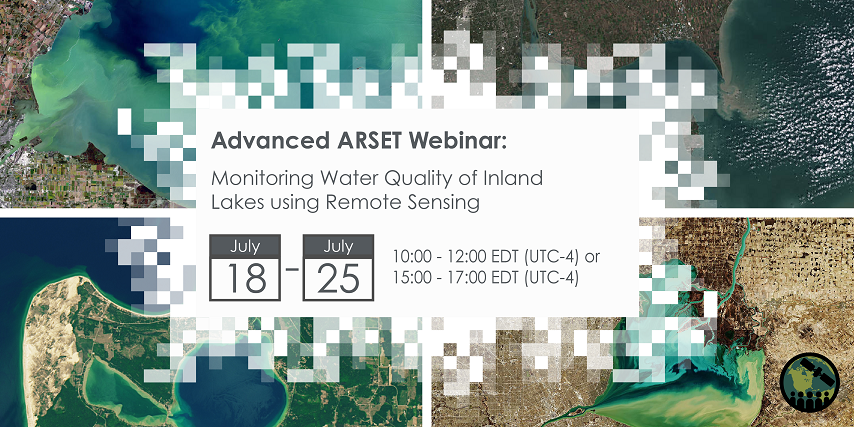This advanced-level training will focus on using remote sensing observations from Landsat 8 and 9, Sentinel-2, and Sentinel-3 for assessing water quality parameters, including chlorophyll-a concentration, turbidity, and Total Suspended Solids (TSS) in inland lakes. This training will also highlight the importance of in situ measurements of these parameters, coincident with satellite observations, in developing methodologies for operational water quality monitoring. Participants will perform hands-on exercises in Google Earth Engine (GEE) to access satellite data and develop methodologies to assess water quality parameters. In addition, an overview of Cyanobacteria Assessment Network (CyAN), an early warning system to assess algal blooms in freshwater lakes will be provided.
Relevant UN Sustainable Development Goals:
- Goal 6: Ensure availability and sustainable management of water and sanitation for all
- Target 6.6: By 2030, protect and restore water-related ecosystems, including mountains, forests, wetlands, rivers, aquifers and lakes
Course Dates: July 18, 20, & 25, 2023
Times: 10:00-12:00 or 15:00-17:00 EDT (UTC-4); There will be identical sessions at two different times of the day. Participants need only to register and attend one daily session.
To Register: https://go.nasa.gov/4233Uv1
Learning Objectives:
By the end of this training, attendees will be able to:
· Identify satellites, sensors, and data relevant for inland water quality monitoring
· Identify best practices for using remote sensing data for water quality monitoring based on the strengths and limitations of data from the available remote sensors
· Recognize how remote sensing data is used in conjunction with in situ data to provide reliable and actionable results
· Follow the Google Earth Engine procedure and settings to be able to analyze water quality for different types of inland water bodies
· Follow methodology on Google Earth Engine (GEE) to derive water quality parameters from remote sensing and in situ measurements
Audience: The primary audience for this training consists of local, state, federal government and non-governmental entities working with water resources and lake ecosystem management, drinking water utilities, public health advisories, and freshwater fisheries.
Course Format: Three, 2-hour parts including Q&A
Twitter announcement: https://twitter.com/NASAARSET/status/1661809359863595009?s=20

